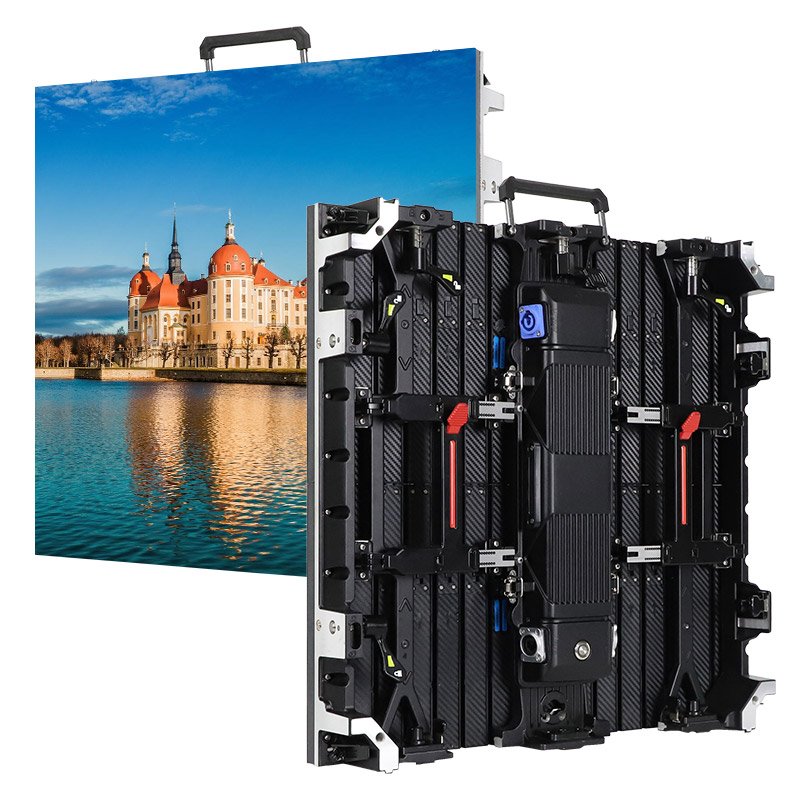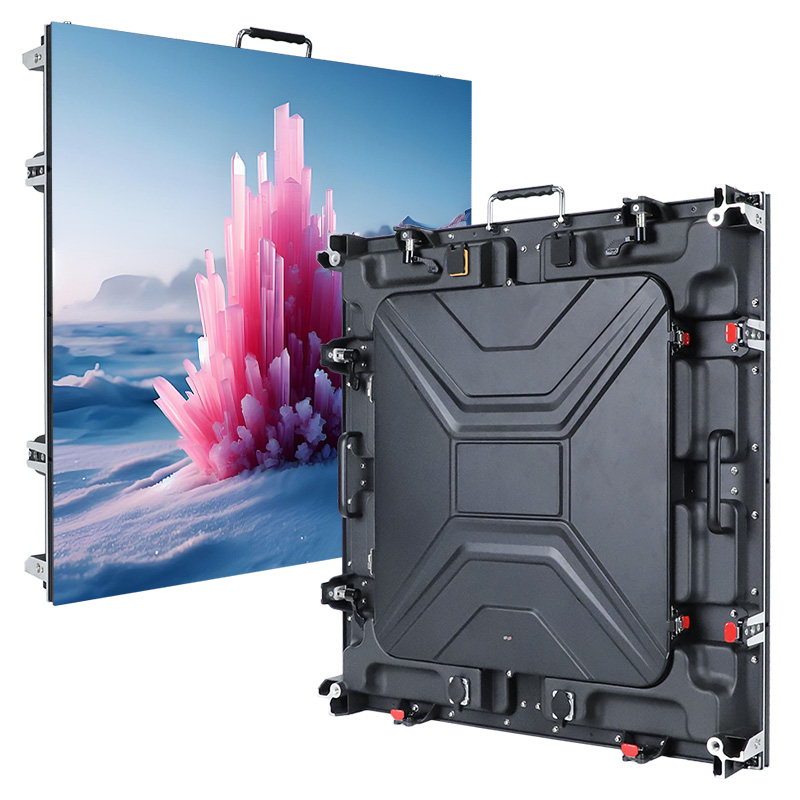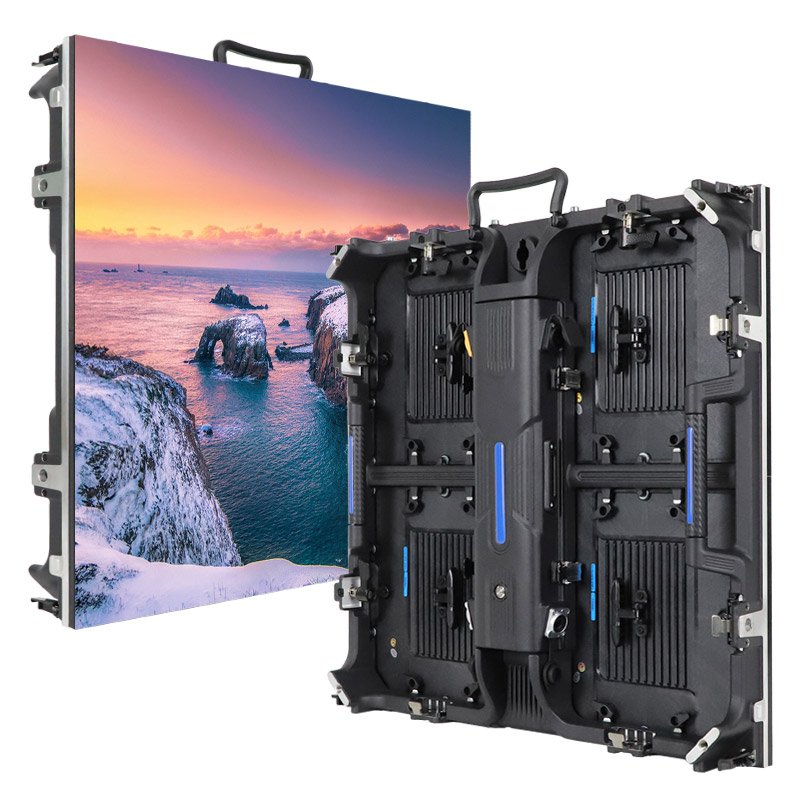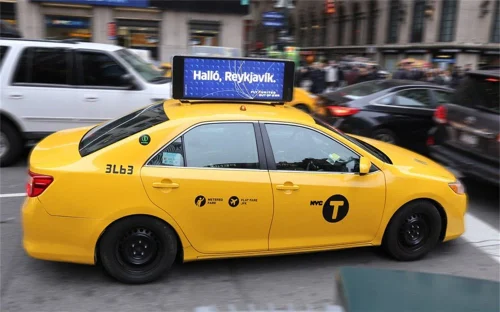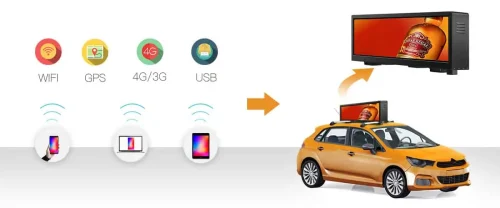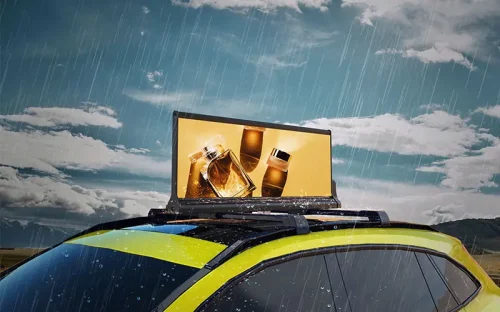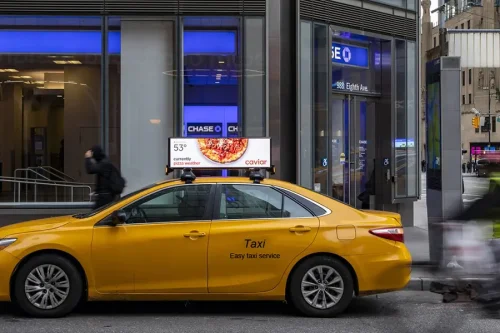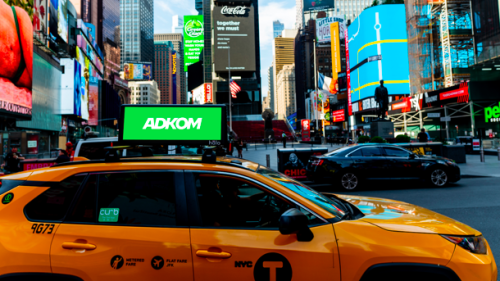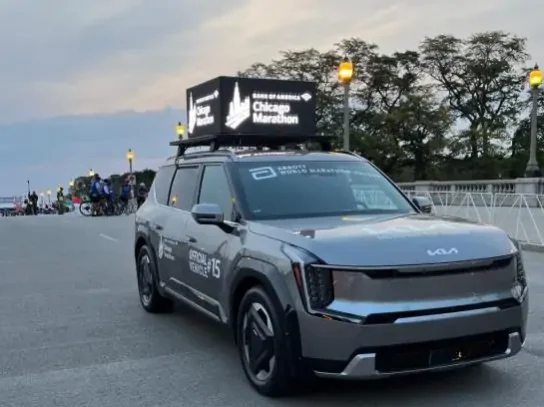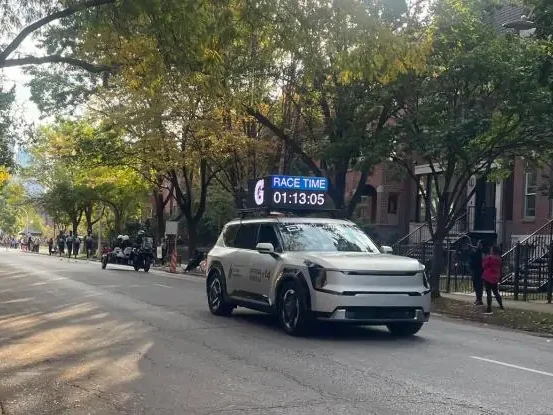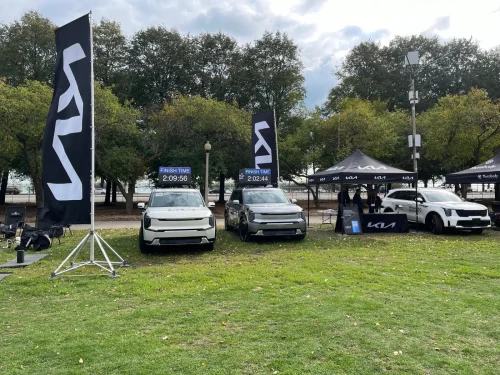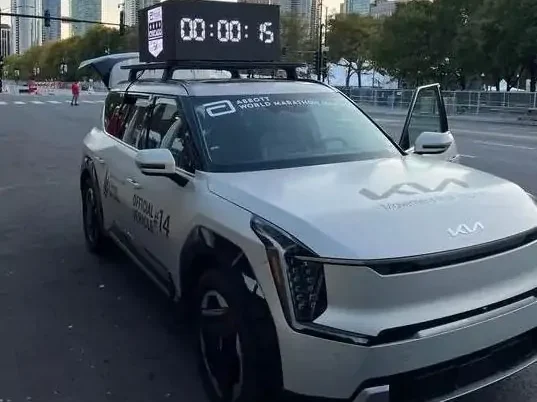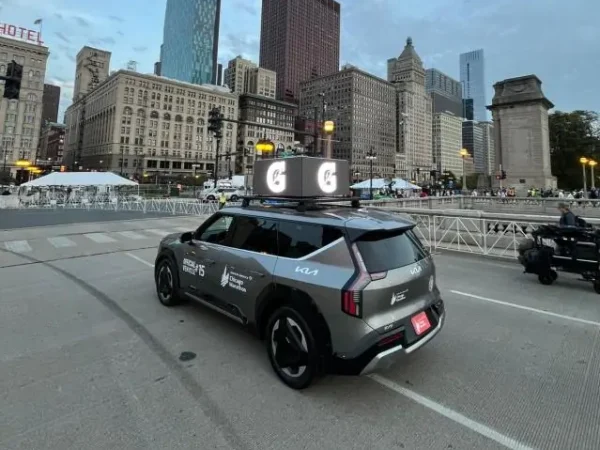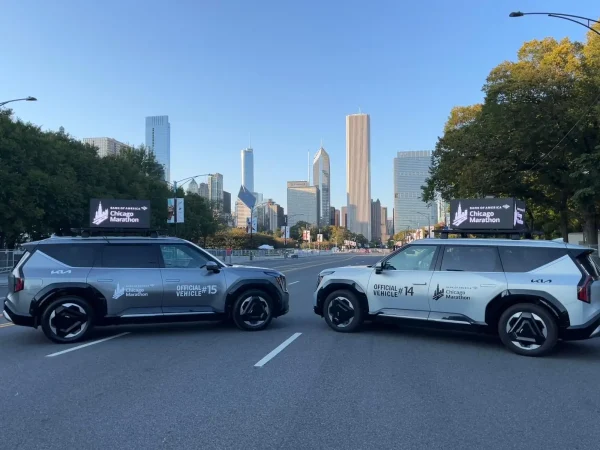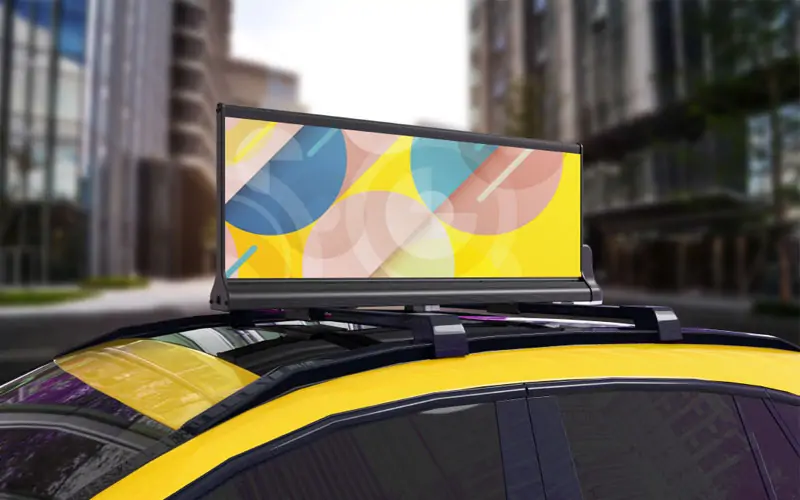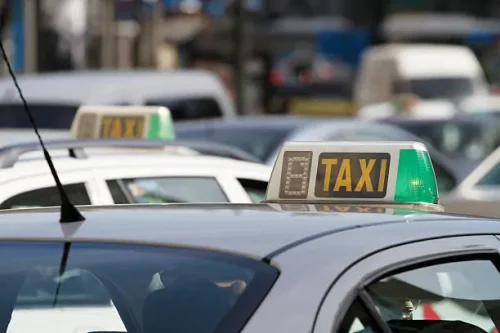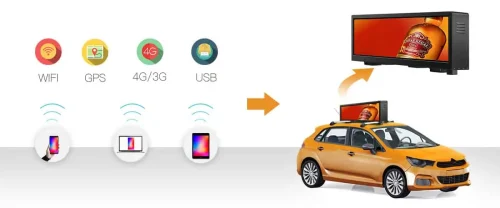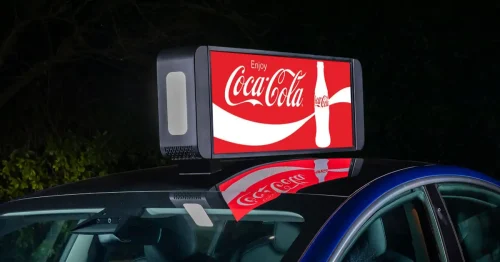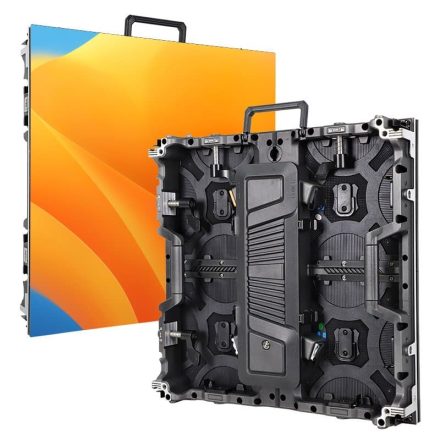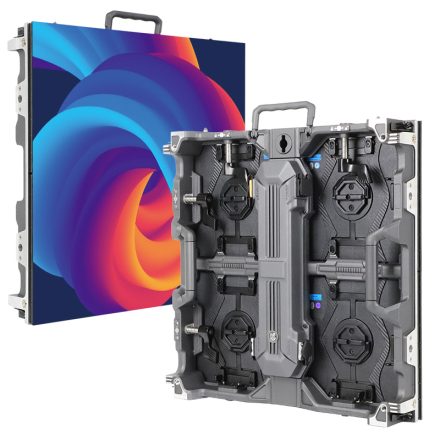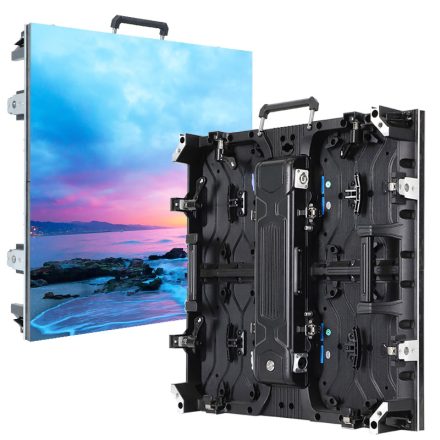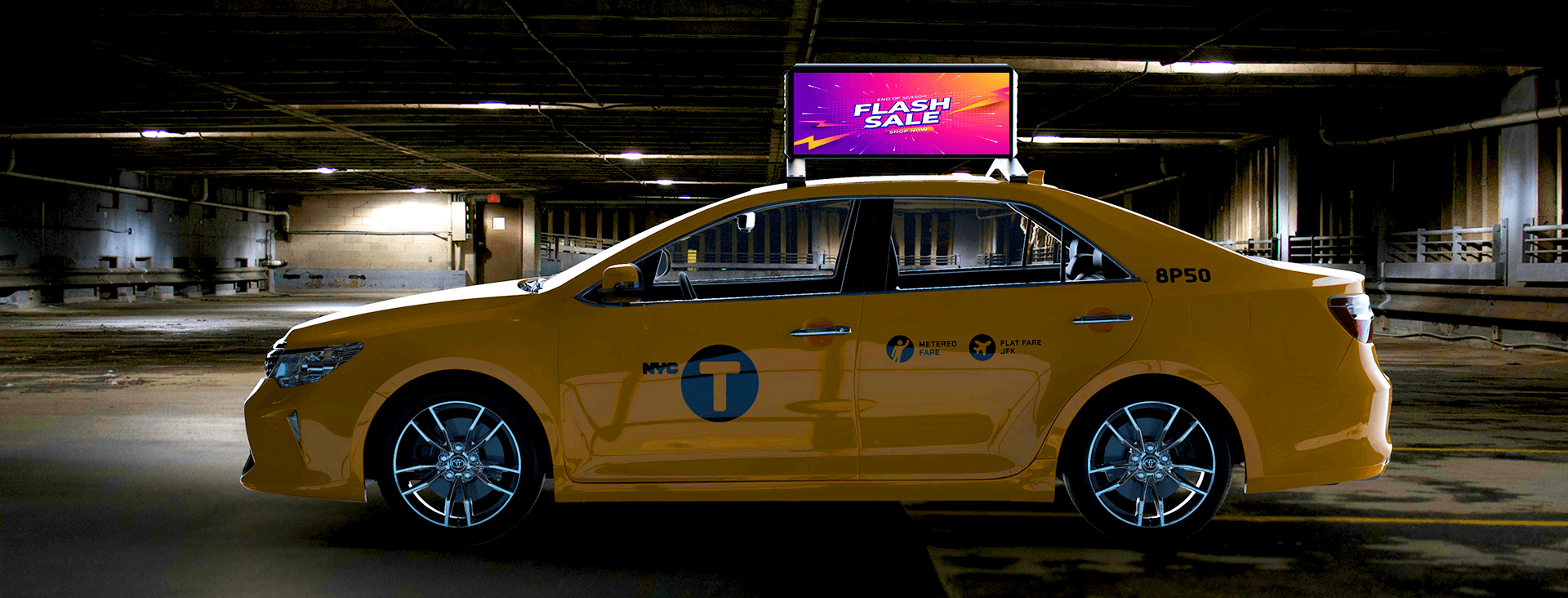
Taxi LED Screen Recommendation
EA500H7 Rental LED Display
Quick Lock Design
Humanized Cabinet Design
Outer Arc or Inner Arc Assembly
3840Hz High Refresh Rate
140° Wide Viewing Angle
Removable Back Cover
EA640C3 Rental LED Wall
11kg Ultra-Light Cabinet
320x160mm Module Size
Excellent Heat Dissipation Performance
IP65 Waterproof Level
Openable Back Cover
Quick Lock Design
EA576H1 Outdoor LED Display
576x576mm Cabinet Size
3840Hz High Refresh Rate
Front and Rear Maintenance Design
Removable Back cover
Hub Connection Design
Optional High-Precision Curve Lock
2025 New LED Screen Price for You
Professional Taxi Top Display Solution Provider
1. 15 Years Experience: EagerLED is a well-known LED display supplier with more than 15 years of industry experience, specializing in rental LED displays, stadium LED screens, transparent LED displays, LED posters and more.
2. Industrial Certifications: All LED displays meet global quality standards and are CE, EMC, LVD, FCC, UL, ISO14001, ISO9001, ISO45001, CCC and RoHS certified.
3. 5000+ Factory Area: Our factory covers an area of more than 5000 square meters and is equipped with advanced machines and equipment and strict quality control procedures to ensure the superior quality of our products.
4. Professional Team: Our company has a professional technical team, sales team and after-sales team, which can solve all the problems in the process of purchase, installation and maintenance.
Key Features of Taxi LED Screens
High Brightness & Visibility
The taxi top displays are designed to provide clear visibility under a variety of lighting conditions. They boast brightness levels as high as 5000nits, which are bright enough to ensure that ads remain legible and vivid even in direct sunlight.
Remote Control
The taxi LED screens are equipped with connectivity options such as 4G/5G, Wi-Fi, and GPS, allowing for remote updates and scheduling. Advertisers are able to manage campaigns in real time by adjusting content according to audience demographics, time and location.
Weather Resistant
The taxi top LED displays are designed to be resistant to diverse environmental conditions. They typically have a rating of IP65 or greater and offer protection from dust and water. Their robust design provides reliable operation in a variety of climates.
Double-Sided Display
The taxi advertising screens support double-sided display, which maximize exposure for both drivers and pedestrians. This design increases the effectiveness and reach of advertising messages.
Content Scheduling
The taxi advertising screens support double-sided display, which maximize exposure for both drivers and pedestrians. This design increases the effectiveness and reach of advertising messages.
EagerLED Customer Case
Dynamic Taxi Top LED Display: 2025 Cutting-Edge Solutions
Compared with traditional fixed LED displays, taxi top LED display expands the range of influence of advertisements to maximize advertising revenues.
This mobile LED display, taxi LED display, is a powerful advertising tool that transmits ad information and content while requiring low advertising costs. This post will provide a cutting-edge solution to help you learn more about the price, advantages, and installation of taxi top LED displays. Let’s get started!
Table of Contents
1.What is A Taxi Top LED Display?
2.How Does Taxi LED Screen Work?
3.The Evolution of Taxi LED Screens
4.What are the Core Advantages of Taxi Advertising Screens?
5.7 Types of Taxi Advertising
6.Taxi LED Display VS Taxi LCD Monitor
7.2025 Taxi Top LED Display Price
8.How to Install the Taxi Top LED Screen?
9.FAQs of Taxi LED Displays
10.Conclusion
1. What is A Taxi Top LED Display?
A Taxi Top LED Display, also called an LED Taxi Topper or Taxi Roof LED Screen, is a vehicle-mounted digital billboard that transforms a taxi into a mobile media platform by mounting an LED panel array on its roof.
It employs high-brightness LEDs, typically in pixel pitches ranging from P2.5 mm to P5 mm, to ensure clear visibility in daylight and nighttime conditions. Enclosed in a slim and weatherproof cabinet (often IP65 rated), these units withstand rain, dust, UV exposure, and temperature extremes while minimizing wind resistance on the vehicle’s roof.
Advertising content is managed via built-in cellular (4G/5G) or Wi-Fi modules and GPS integration, enabling remote scheduling, real-time updates, and location-based ad targeting from a cloud CMS platform.
2. How Does Taxi LED Screen Work?
Taxi Top LED Displays are mobile LED billboards that combine high-brightness LEDs, media control, wireless connectivity, and power management. The system uses the vehicle battery to power it, receives scheduled content from a cloud CMS via 4G/5G/Wi-Fi and uses GPS to trigger geofenced ads.
2.1 Based Components
Taxi LED screens integrate high-brightness SMD LED modules for optimal visibility across daylight and nighttime conditions, housed in IP65-rated die-cast aluminum enclosures to protect interior electronics from rain, dust, and UV exposure while minimizing wind drag on the vehicle roof.
2.2 Power Supply
The taxi top display integrates adaptive lighting and power management features. It draws power from the 12-24V electrical system of the vehicle through a DC/DC converter, ensuring stable operation. Voltage monitors are used to prevent battery drain.
Simultaneously, an ambient-light sensor dynamically adjusts LED brightness–increasing output in daylight for enhanced visibility and reducing it at night for energy efficiency–creating an optimized balance between performance and power conservation.
2.3 Content Control and Storage
The taxi top LED display features an Android/Linux-based controller that manages content delivery—receiving playlists, decoding media files, and transmitting pixel data to LED modules, with SSD/eMMC local storage ensuring uninterrupted playback during network outages.
While primarily designed for remote content updates via wireless networks, it also incorporates USB/HDMI interfaces for depot-based onsite uploads and firmware maintenance.
2.4 Content Delivery
The Taxi Top LED Display System features a dual network connection with a built-in 4G/5G modem that retrieves playlists and firmware updates in real-time from a cloud CMS, while utilizing garage Wi-Fi for bulk data transfer to minimize cellular consumption.
In addition, the integrated GPS module, which uses timestamp/location data to geotag all playback events and enables dynamic ad switching via geo-fencing – automatically triggering area-specific content (e.g., shopping zone promotions) when a vehicle crosses predefined geographic boundaries – ensures accurate event targeting.
2.5 Cloud CMS & Analytic
The taxi top LED display provides end-to-end campaign management via a centralized Web dashboard where marketers can remotely upload creative, configure time/location-based playlists, and deploy synchronized content across the entire fleet.
Meanwhile, the CMS system automatically compiles comprehensive performance data, including a number of displays, device uptime, and accurate GPS-tagged playback records, into visual analytics reports that enable real-time ROI tracking and data-driven optimization of ad strategies.
3. The Evolution of Taxi LED Screens
As an important tool for on-board information and advertising communication, the technological evolution of taxi LED screens is inseparable from the development of the LED display industry.
3.1 Early Period (before 1990s): Monochrome Display and Basic Functions
Early taxi LED display screen to red, green dual-color-based, using a simple communication control mode, gray level is only a single point of 4-level grayscale. Due to the limitation of LED material and driving technology, the taxi LED screen resolution is a low, single function, mainly used to display “empty” or “passenger” and other basic state information.
3.2 Rapid Development Period (1990s-2000s): Full-Color Display and Dynamic Content
In the 1990s, the success of blue LED research and development to promote full-color display into the market, taxi LED displays can support 16 to 64 levels of grayscale grayscale, dynamic display effect significantly improved.
The control technology was upgraded from communication control to video control, supporting mixed graphics and simple animation, and taxi top LED displays began to be used for advertising displays. (e.g., scrolling text banners).
3.3 Technology Optimization Period (2000-2010s): High Brightness and Reliability Improvement
1. Packaging Technology: Surface-mount (SMD) technology is used to improve pixel density and display delicacy, and the screen brightness reaches more than 800mcd to meet the needs of day and night visibility.
2. Remote Control: Support remote control (GPRS/GPS), advertising content can be updated in real time, and some cities can realize linkage with traffic management systems.
3. Protection: Through waterproof and dust-proof design (such as IP65 rating) and shock-resistant structure, it can adapt to the frequent vibration of the on-board environment and the complex outdoor climate.
4. Energy Optimization: Introduce a low-voltage DC power supply (e.g., 24V design) to reduce power consumption and reduce the burden on the vehicle’s battery.
3.4 Intelligent and Scenario-Based Period (2010s to Present)
1. Intelligent Control: Integrate IoT technology to support dynamic content management (such as time-based advertising, weather information push).
2. Energy-Saving Innovation: GOB (Glue on Board) packaging technology is used to improve screen protection while reducing power consumption by 40%, such as the low-voltage direct drive architecture of Saipu Technology’s “Cicada Wing” series.
3. Diversification of Forms: Flexible and transparent screen technologies have begun to explore in-vehicle applications, such as combining LED screens with car windows to take into account advertising functions and passenger vision.
4. Widely Used: In addition to advertising, taxi LED screens are used in public services (such as epidemic reminders, missing person notices), passenger interaction (such as scanning codes to evaluate drivers) and other scenarios, becoming urban mobile information terminals.
4. What are the Core Advantages of Taxi Advertising Screens?
Taxi advertising screens—whether mounted on rooftops or integrated inside vehicles—provide brands with a dynamic, cost-effective, and highly visible platform to engage urban audiences. Here are the key advantages:
4.1 High Mobility & Penetration
A single taxi travels more than 300 kilometers per day, naturally covering multiple types of scenes such as commercial districts, residential districts, and transportation hubs, with a reach rate up to 3 times that of fixed advertisements.
Adopting high refresh rate LED module, the length of active viewing by pedestrians when scrolling is more than 5 seconds, and the memory retention rate is 7 times higher than that of static advertisement.
4.2 Targeted Advertising
Utilizing GPS and data analytics, taxi LED displays can display ads tailored to specific locations and times. This enables businesses to reach their desired audience effectively, such as showing breakfast specials in the morning and nightlife ads in the evening.
4.3 Low-Cost Marketing
The cost per thousand impressions of taxi top displays is typically $1–5 CPM, far cheaper than TV, radio, or print ads. Taxi top displays offer a more affordable solution with a high return on investment, which is ideal for SMEs targeting hyperlocal audiences without large budgets.
4.4 Low Maintenance & Durability
The IP65-rated taxi LED displays can withstand rain, dust and -30℃ to +70℃ extreme temperatures. It is durable for long-term operation, effectively reducing maintenance costs. Built-in (5V-24V) low-voltage LED systems for minimizing battery drain.
4.5 High Engagement
Taxi top LED screens installed are located at eye level and provide bright, high-resolution displays that capture attention day or night. Their dynamic content, including video and animation, boosts engagement and ensures messages are memorable.
4.6 Measurable ROI
You can track locations, impressions, and engagement times via GPS and loT sensors, which are convenient for data analysis. In addition, QR codes and UTM parameters can link offline ads to online conversions.
5. 7 Types of Taxi Advertising
There are totally 7 formats of taxi ads including taxi top ads, taxi interior ads, taxi rear window ads, taxi trunks, taxi full wrap ads, taxi door ads, and branded receipt pads.
(1) Taxi Top Ads: Taxi top advertising is a mobile outdoor advertisement displayed on the roof of a taxi. The taxi LED screens can playback static images or dynamic content to drivers and pedestrians in high-traffic urban areas.
(2) Taxi Interior Ad: It is an in-cab advertising placed inside the taxi like headrest screens and interior panels to deliver brand messages directly and captive audiences throughout their journey.
(3) Taxi Rear Window Ad: It utilizes transparent LED displays mounted on taxi rear windows to showcase dynamic advertisements visible to following vehicles and pedestrians.
(7) Branded Receipt Pads: These are customized receipts featuring brand logos, messages, or QR codes. As passengers often keep receipts for expense reporting, this format offers a tangible reminder of the brand.
(6) Taxi Door Ads: Taxi door advertising refers to promotional displays installed on taxi doors, typically utilizing digital panels to showcase brands to pedestrians and nearby traffic.
(5) Taxi Full Wrap Ads: This format involves covering the entire exterior of the cab with vinyl graphics, turning the vehicle into a moving billboard. It’s perfect for long-term advertising campaigns looking for maximum exposure and brand impact.
(4) Taxi Trunks: Cab trunk advertising involves placing an advertisement on the outer surface of the trunk, usually for the purpose of being seen by vehicles traveling behind the cab.
6. Taxi LED Display VS Taxi LCD Monitor
When comparing Taxi Top LED Displays and Taxi LCD Displays, it is important to understand their unique features to determine which one is best suited for your advertising needs. This is a comprehensive comparison:
6.1 Taxi LCD Monitors
Considerations:
- Brightness limitations: LCDs can be difficult to see in direct sunlight, limiting their effectiveness in outdoor advertising.
- Energy Consumption: Compared with LED displays, the taxi LCD monitors consume more power.
Advantages:
- High Resolution: LCDs provide exquisite image quality, which makes them ideal for detailed content.
- Cost Effective: Taxi LCD monitors tend to be more affordable at first, making them an attractive choice for budget-conscious consumers.
- Indoor Use: Ideal for in-cab advertising, providing clear visuals for passengers.
6.2 Taxi Top LED Display
Consideration:
- Initial Cost: Taxi LED displays may cost more upfront than taxi LCDmonitors.
Advantage:
- High Brightness: Taxi top LED displays are brighter than LCDs and can be seen even in direct sun, which makes them perfect for outdoor advertising.
- Energy Efficiency: LEDs are more energy efficient than LCDs and can save you money in the long run.
- Durability: Taxi LED displays have a greater lifespan and are more durable. They can last up to 100,000 hours.
- Flexibility: Thetaxi LED screens can be made in many shapes and sizes including flexible and curved formats. This allows for creative advertising solutions.
Therefore, taxi LED displays are ideal for outdoor advertising because of their high brightness and durability. On the contrast, the taxi LCD monitor is suitable for in-cab advertising with high resolution.
7. 2025 Taxi Top LED Display Price
The price of taxi top LED displays depends on various factors, such as screen sizes, technologies, screen materials, specifications, etc.
7.1 Key Factors Influencing Price
1. Screen Specifications:
Screen Size: Manufacturing costs and final pricing of LED displays increase proportionally with screen size due to higher material usage and production complexity.
Resolution: High pixel density needs additional LEDs, which improve price potentially.
Brightness: High-brightness LEDs (for daylight visibility) add cost.
2. Display Technology:
Connectivity: Special connecting technology will increase the price like GPS, 4G/5G, Bluetooth, or Wi-Fi integration.
Solar Power: Solar-compatible or low-energy designs may raise costs.
Software: Content management systems or subscription services will influence the cost.
Weatherproofing: The IP65 rating or other higher waterproof rating demands higher technology costs.
3. Additional Costs:
The additional costs also affect the price of the taxi top LED display, including installation, maintenance, and other after-sale services.
7.2 The Price of Taxi Top LED Displays
The latest price range of taxi LED displays is around $200-2500+. Prices may shift slightly due to inflation or advancements in LED efficiency. For precise pricing, request a tailored quote from EagerLED.
8. How to Install the Taxi Top LED Screen?
Proper installation of a taxi top LED display demands meticulous planning, appropriate tools, and strict compliance with safety protocols. Follow this step-by-step guide for optimal results:
Step 1: Verify local laws for taxi top LED displays.
Step 2: Plan the mounting location and keep the taxi roof clean and dry.
Step 3: Disconnect the taxi’s battery to avoid electrical shorts.
Step 4: Mark drill holes on the taxi roof with a pencil.
Step 5: Apply silicone sealant around holes to prevent water leakage.
Step 6: Attach the bracket to the taxi LED screen.
Step 7: Install the bracket on the top of the center of the car.
Step 8: Route wires from the LED display to the taxi’s electrical system.
Step 9: Use an in-line fuse (5–10A) to connect to the fuse box or battery.
Step 10: Seal wire connections with waterproof heat-shrink tubing or electrical tape.
Step 11: Use conduit or zip ties to secure wires and prevent tangling.
Step 12: Reconnect the taxi battery and turn on the taxi LED display.
9. FAQs of Taxi LED Displays
1. Can you make money from taxi top advertising?
Dynamic advertising content can be displayed on the LED screen and the driver can earn money from the advertising revenue.
2. What are the challenges of taxi advertising?
The taxi advertising will meet certain challenges including regulatory restrictions, weather dependency, and tracking effectiveness.
3. What is the typical pixel pitch range for taxi LED screens?
The typical pixel pitch range for taxi LED displays spans from P2.0mm to P6.0mm.
4. What voltage does taxi advertising screen require?
The taxi advertising screen typically operates on DC5V-36V.
5. How to deliver content to taxi top displays?
You can send the advertising content through Web CMS, Mobile App, USB Drive, 4G/5G, and specialized software.
6. Where can taxi advertising screens be used?
This taxi top display can be used for brand building, promotion, new product launches, and event marketing.
10. Conclusion
EagerLED, as a sophisticated car LED screen supplier, supports customization service according to your car types and installation positions. Contact us to get the preferred price!
The taxi top LED displays offer brands an innovative way to maximize reach and visibility at a fraction of traditional media costs. Unlike traditional fixed LED billboards, this mobile LED screen delivers targeted ads directly to urban audiences.



























